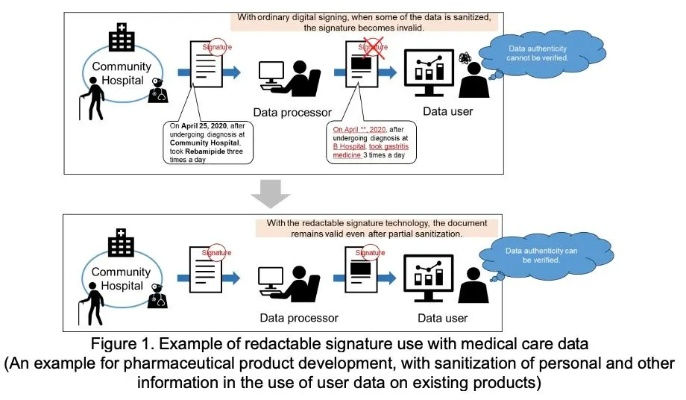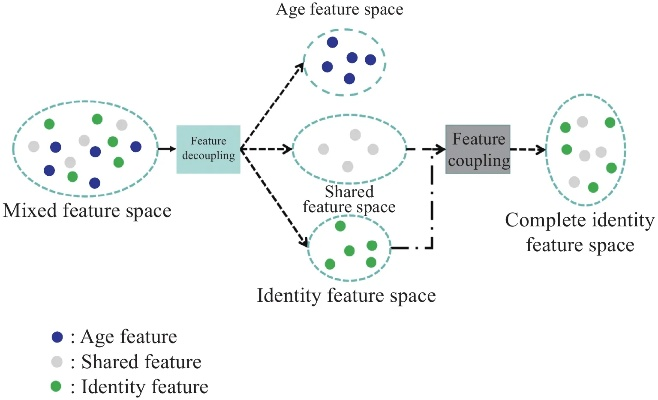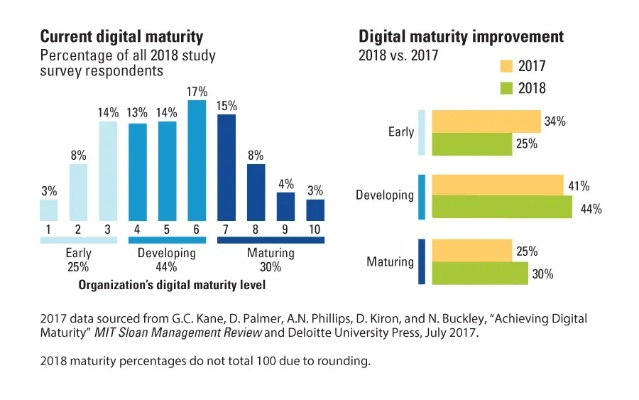In the digital age, verification holds great significance. It helps ensure the authenticity and reliability of information in a vast digital landscape. Verification methods include cross-referencing multiple sources, using digital signatures and certificates, and validating data through cryptographic techniques. By verifying, we can safeguard against misinformation, fraud, and cyber threats. It also builds trust among users and enhances the integrity of digital systems. However, verification in the digital age poses challenges such as the volume and complexity of data. Therefore, continuous innovation in verification techniques and tools is necessary to keep pace with the evolving digital environment.
In the digital age, verifying has become an increasingly important aspect of various fields and activities. With the rapid development of technology and the vast amount of information available, ensuring the accuracy, authenticity, and reliability of data and information is crucial. Verifying not only helps to maintain the integrity of systems and processes but also safeguards the interests of individuals and organizations. This article will explore the significance of verifying and discuss some common methods used in different contexts.
I. The Significance of Verifying
-
Accuracy and Quality Assurance
- In scientific research, verifying the results of experiments and studies is essential. Scientists need to repeat experiments, cross-reference data from multiple sources, and use appropriate statistical methods to ensure the accuracy and reliability of their findings. This helps to build a solid body of knowledge and prevent the dissemination of incorrect or misleading information.
- In business, verifying the quality of products and services is vital for customer satisfaction and the company's reputation. For example, manufacturers need to verify the raw materials, production processes, and final product specifications to ensure that they meet the required standards. Quality control checks, inspections, and certifications are common verification methods used in this context.
- In the field of journalism, verifying the sources and facts of news stories is the foundation of ethical journalism. Journalists have a responsibility to report the truth and avoid spreading false or unsubstantiated information. Verifying the authenticity of sources, checking for consistency with other reliable information, and fact-checking claims are all part of the verification process to ensure the credibility of news reports.
-
Security and Protection
- In the digital realm, verifying the identity of users and devices is crucial for security. Authentication mechanisms such as passwords, biometrics, and two-factor authentication help to prevent unauthorized access to systems and protect sensitive information. Verifying the integrity of software and firmware updates is also important to ensure that systems are not vulnerable to security threats.
- In financial transactions, verifying the identity and legitimacy of parties involved is essential to prevent fraud. Banks and other financial institutions use various verification methods, such as Know Your Customer (KYC) procedures, to ensure that customers are who they claim to be and that the funds are being used for legitimate purposes. Verifying the authenticity of payment cards and online transactions helps to safeguard against financial losses.
- In the area of national security, verifying the identities of individuals and the authenticity of information is of utmost importance. Intelligence agencies and security forces use a variety of verification techniques to identify potential threats and protect the country from external and internal risks. This includes background checks, surveillance, and analysis of intelligence data.
-
Trust and Reputation
- In a society where trust is essential for the smooth functioning of various systems, verifying helps to build and maintain trust. In business, customers are more likely to trust a company that has a reputation for providing accurate and reliable products and services. Verifying the quality and authenticity of a company's offerings can enhance its reputation and attract more customers.
- In the academic and research community, verified research findings and contributions are more likely to be respected and cited. This helps to build the reputation of individual researchers and institutions. Verifying the academic credentials and research methods of scholars also ensures the integrity of the academic system.
- In social media and online platforms, verifying the identities of users can help to reduce the spread of misinformation and fake news. Verified accounts are often considered more reliable and trustworthy by users, which can contribute to a more positive and accurate online environment.
II. Methods of Verifying
-
Data Validation and Cross-Checking
- In many cases, data needs to be validated to ensure its accuracy and consistency. This can involve checking for data types, ranges, and logical relationships. For example, in a database, age fields may need to be within a certain range, and numerical values may need to follow specific mathematical rules. Data validation tools and software can be used to automate this process and flag any errors or inconsistencies.
- Cross-checking data from multiple sources is another important verification method. This can involve comparing data from internal systems with external data sources, such as industry reports, government databases, or other reliable information. For example, a company may cross-reference its sales data with market research reports to ensure the accuracy of its revenue projections.
- In scientific research, data replication and triangulation are common techniques. Replicating experiments by other researchers can help to verify the results. Triangulation involves using multiple methods or data sources to converge on a single conclusion. This helps to reduce the potential for bias and increase the reliability of the findings.
-
Authentication and Authorization
- Authentication is the process of verifying the identity of a user or device. This can be done through various means, such as passwords, PINs, biometric authentication (such as fingerprint or facial recognition), and digital certificates. Authentication systems need to be secure and resistant to attacks, such as password guessing and phishing.
- Authorization is the process of determining what a user or device is allowed to access or do. This is based on the user's identity and the permissions assigned to them. Authorization systems need to be carefully configured to ensure that only authorized users can access sensitive information or perform privileged actions. Role-based access control (RBAC) is a common authorization model used in many organizations.
- In the context of digital identity, blockchain technology can be used for secure authentication and authorization. Blockchain's immutability and transparency can provide a reliable way to verify identities and track access rights. However, there are also challenges associated with implementing blockchain-based authentication, such as scalability and regulatory issues.
-
Verification of Documents and Certificates
- Documents and certificates play an important role in verifying information and credentials. For example, educational certificates, professional licenses, and identity documents need to be verified to ensure their authenticity. This can involve contacting the issuing institution directly, using online verification services, or cross-referencing with official databases.
- In the legal and financial sectors, verifying the authenticity of signatures and seals on documents is crucial. Forgery detection techniques, such as ink analysis and digital watermarking, can be used to identify fake documents. In some cases, notarization or公证 services may be required to add an extra layer of verification and authenticity.
- In the area of e-commerce, verifying the authenticity of digital certificates and payment gateway security is essential to protect customers' financial information. Secure Socket Layer (SSL) certificates and Payment Card Industry Data Security Standard (PCI DSS) compliance are common measures used to ensure the security of online transactions.
-
Surveillance and Monitoring
- Surveillance and monitoring systems can be used to verify the activities and behavior of individuals or systems. In physical security, CCTV cameras, access control systems, and motion sensors can be used to monitor buildings and premises. In the digital realm, network monitoring tools can be used to detect unusual network traffic, potential security threats, and system anomalies.
- Social media and online platforms also use surveillance and monitoring techniques to detect and remove false or malicious content. Automated content moderation systems can flag posts that contain misinformation, hate speech, or other inappropriate content. Human review and verification may be required in some cases to ensure the accuracy of the moderation decisions.
- In the area of supply chain management, surveillance and monitoring can be used to verify the movement and condition of goods. GPS tracking, RFID tags, and video monitoring can be used to ensure that products are delivered on time and in good condition. This helps to reduce the risk of fraud and ensure the quality of the supply chain.
-
Background Checks and Investigations
- Background checks are commonly used to verify the personal and professional history of individuals. This can include criminal records, credit history, employment history, and educational background. Background check services can be used by employers, landlords, financial institutions, and other organizations to assess the suitability and trustworthiness of individuals.
- Investigations can be more in-depth and may involve gathering evidence and interviewing witnesses. In legal cases, private investigators may be hired to verify facts, identify witnesses, and gather information relevant to a case. In fraud cases, investigations can help to uncover the truth and identify the perpetrators.
- In the area of national security, background checks and investigations can be extensive and involve multiple agencies and databases. These can include intelligence gathering, wiretapping, and physical surveillance. The goal is to identify potential threats and protect the country from internal and external threats.
III. Challenges and Future Trends in Verifying
-
Challenges
- The increasing volume and complexity of data pose challenges to verification. With the growth of big data and the Internet of Things (IoT), there is a vast amount of data that needs to be verified. Manual verification methods are often time-consuming and error-prone, and automated verification techniques need to be不断改进 to handle the complexity of modern data.
- The emergence of new technologies and threats also presents challenges to verification. For example, the rise of cryptocurrencies and blockchain technology has led to new challenges in verifying the authenticity and ownership of digital assets. The use of artificial intelligence and machine learning in fraud detection and authentication can also be vulnerable to adversarial attacks, where attackers try to deceive the systems.
- The issue of privacy and data protection is another challenge in verification. Verifying data often requires access to personal and sensitive information, and there is a need to balance the need for verification with the protection of individuals' privacy. Regulations and ethical guidelines need to be followed to ensure that verification activities are conducted in a legal and responsible manner.
-
Future Trends
- The use of artificial intelligence and machine learning in verification is likely to increase. These technologies can be used for pattern recognition, anomaly detection, and fraud prediction. For example, AI-powered chatbots can be used for identity verification and customer support. Machine learning algorithms can also be used to improve the accuracy of data validation and cross-checking.
- The development of decentralized verification systems, such as blockchain-based solutions, may provide more secure and transparent verification. Blockchain's immutability and distributed ledger technology can help to reduce the risk of fraud and improve the trustworthiness of verification processes. However, the scalability and interoperability of these systems need to be解决 before they can be widely adopted.
- The integration of multiple verification methods and technologies is likely to become more common. For example, a combination of biometric authentication, data validation, and background checks may be used to provide a more comprehensive verification solution. The use of multi-factor authentication, which combines multiple authentication factors such as passwords, tokens, and biometrics, can also enhance security.
In conclusion, verifying is of utmost importance in the digital age. It helps to ensure the accuracy, authenticity, and reliability of data and information, which is crucial for various fields and activities. The methods of verifying have evolved over time, and new technologies and trends are emerging to address the challenges of verification. However, there are still challenges that need to be overcome, such as the complexity of data, the emergence of new threats, and privacy issues. As technology continues to advance, the need for effective verification will only increase, and it will be essential for individuals and organizations to stay vigilant and adapt to the changing verification landscape.








 京公网安备冀I陇ICP备2022000946号-1
京公网安备冀I陇ICP备2022000946号-1
还没有评论,来说两句吧...